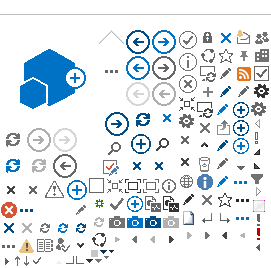As catastrophes, social inflation and other challenges force admitted carriers to become more risk-adverse, the excess & surplus market is anticipated to grow.
The January 2025 wildfires in California consumed an estimated 40,000 acres of homes, businesses and landmarks, with insured property losses estimated at up to $45 billion, according to ClaimsJournal. With these losses—in addition to other property losses due to hurricanes, flooding and wildfires throughout the U.S.—carriers within the standard insurance market are more risk-averse in certain geographical areas and product lines than ever before.
“What we anticipate seeing, particularly in California, is a shortage of admitted capacity, specifically for high-net worth clients," says David Nelson, executive vice president, E&S wholesale, Nationwide. “As a result, it's anticipated that it's going to become a growth area for the excess & surplus market, as admitted insurance options are likely going to be limited."
Casualty lines challenges are also forcing insureds to rely on E&S. “There are challenges, such as social inflation and litigation funding, that I don't see us solving in the near future," says Kevin Doyle, CEO of Risk Placement Services Inc. (RPS). “Additionally, cyber is still fairly new and continuing to evolve, along with professional lines of business such as directors & officers."
“Historically—and even more so moving forward—the E&S and wholesale world can develop different solutions to bring to the table to solve these problems," Doyle explains.
For independent insurance agents with clients encountering this challenging environment, “the nice thing is that the E&S market is becoming more of a stable market that is priced well and is growing," Nelson explains. “We're starting to see signs of rate leveling and, in some instances, decreases in rates, as well as capital continuing to enter that space. These are good signs for the consumer."
As the market evolves, so too do the opportunities for agents to provide more tailored coverage for their clients through the E&S market. Here are three tips to evaluate the options:
1) Understand what the market has to offer. “Today, most larger carriers have their own E&S business and their own admitted business, so they can toggle where they want," Doyle says. “But it is the data that carriers have today versus what they had 10 years ago that is the middle link, allowing them to determine how and where they want to operate."
Knowing what is available in terms of coverage options is important. “Understand the appetite, product depth and the coverage details that are unique to each carrier so you can find the perfect home for your clients," says Lynanne St. Denis, chief underwriting officer, wholesale, at Navigators, a brand of The Hartford. “In E&S property, in particular, the rate-adequate environment has created an attractive opportunity for those looking to deploy capital; therefore, capacity has surged in the past year to effectively meet demand, specifically in catastrophe-prone areas."
2) Stay informed. “The E&S marketplace is a complex one," Nelson says. “There are complex risks out there, so there's always evolving market trends and new coverage options that might help address a client's needs."
Agents should continue to “look for that deep specialization from wholesale partners and those carriers that offer the product they're looking for," Nelson says. “Find partners that have that specialization, because that helps them bring options to the insured."
Additionally, “work with your partner wholesalers to identify gaps in risk transfer and risk mitigation that will benefit your clients," St. Denis says. “Through active collaboration, carriers can then innovate solutions that will set us all apart."
3) Educate your clients on E&S benefits. “In the past, some may have viewed the E&S market as the market of last resort, but there's also a side of us that offers innovative and proactive solutions," Nelson says.
By working together with carriers and wholesalers, agents gain “the ability to bring advice and expertise to drive a better outcome for clients," Doyle says. “Agents can then tell the story to an insured of why things are above the average and what we can do collectively to work through that."
Olivia Overman is IA content editor.
